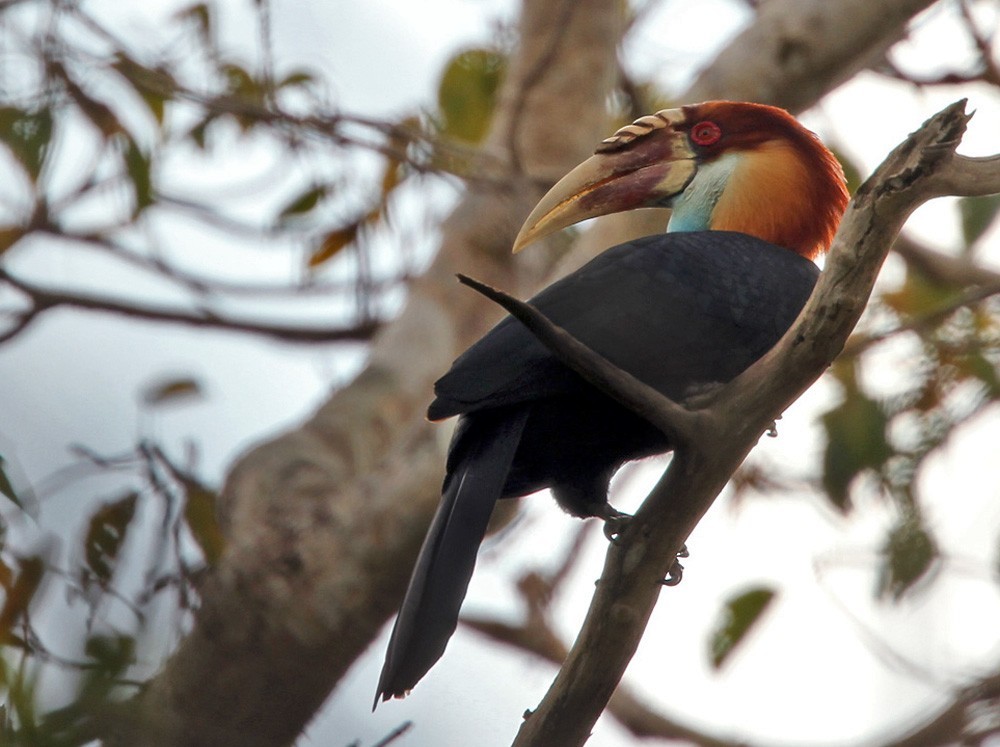Sumba Hornbill
A species of Hornbill Scientific name : Rhyticeros everetti Genus : Hornbill
Sumba Hornbill, A species of Hornbill
Botanical name: Rhyticeros everetti
Genus: Hornbill
Content
Description General Info
 Photo By Lars Petersson
Photo By Lars Petersson Description
It is a medium-sized, blackish hornbill, approximately 70 cm long. The male is dark reddish-brown on the crown and nape, with a paler neck. The female has entirely black plumage. Both sexes have a large, dull, yellowish bill with a maroon patch at the base, a serrated casque, and an inflatable blue throat. 
Size
55 cm
Nest Placement
Cavity
Feeding Habits
Sumba Hornbill primarily consumes fruit, particularly figs, but may also feed on small animals. Often forages in pairs or groups up to 15 at fruiting trees, and is known to travel extensively over various terrains to find food.
Habitat
The sumba Hornbill typically inhabits patches of primary deciduous forests. Its presence extends into secondary forests and open parklands that are rich with fruiting trees. These environments provide the necessary resources for the sumba Hornbill's survival such as food and nesting areas.
Dite type
Frugivorous
General Info
Feeding Habits
Bird food type

Fruit
Behavior
The Sumba hornbill is a monogamous species. Its diet consists mainly of fruits. 
Distribution Area
An Indonesian endemic, the Sumba hornbill inhabits semi-evergreen forests of Sumba in the Lesser Sunda Islands. It is uncommon and found in the lowlands at altitudes of up to 950 m (3,120 ft). 
Species Status
Due to ongoing habitat loss, limited range, small population size and overhunting in some areas, the Sumba hornbill is assessed as Vulnerable on the IUCN Red List of Threatened Species. It is listed on Appendix II of CITES. Part of its habitat is protected in the Laiwangi Wanggameti National Park and the Manupeu Tanah Daru National Park. 

 Photo By Lars Petersson
Photo By Lars Petersson